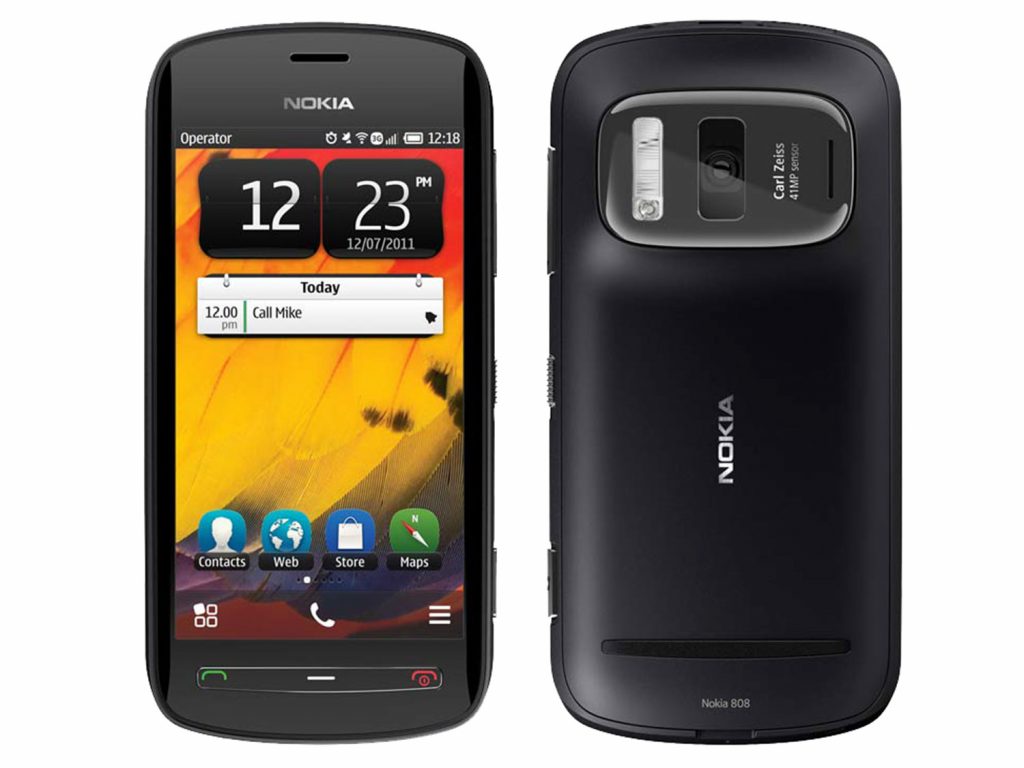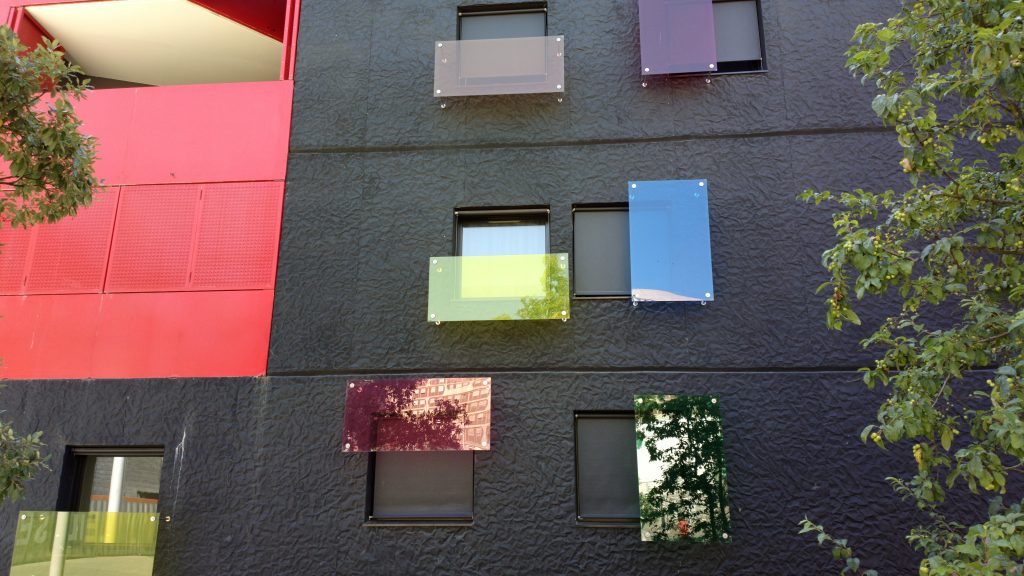A photographically groundbreaking smartphone in 2012, the Nokia 808 uses a large 1/1.2-inch sensor and massive 41MP resolution. The big sensor allows the use of a larger lens that gathers more light, and the Nokia 808 offered better image quality than many of its rivals at the time. The 41MP sensor also opened the door for zoom on smartphones, which is one of the functions Apple brought back with the dual-camera technology on the iPhone 7 Plus in 2016.
Smartphone camera technology has moved on exponentially since 2012, however, with manufacturers using new hardware and improved algorithms for HDR and bokeh processing.
We’ve gone back and retested the Nokia 808 using the new protocol and the results are interesting. The summary sections provide a basic overview of its performance, and to help you better understand the changes under the new protocol, the “Photo scores explained” section provides more detail on its impact on scores.
Key camera specifications:
- 1/1.2-inch sensor with 41MP resolution (38MP effective)
- f/2.4 Carl Zeiss lens
- Full-HD video
- 4x ‘lossless’ zoom
- Xenon flash
- 4-inch AMOLED LCD display with 360×640-pixel resolution
Please note that for this article we have retested the HTC U11 with our updated DxOMark Mobile test protocol that includes tests for zoom performance and quality of the bokeh, among other improvements. You can still find our original Nokia 808 PureView review from December 2012 here.
Test Summary: Big sensor, good detail (sometimes)
The Nokia 808 PureView obtains one of the lowest scores among devices that have been tested with our new test protocol. However, this should not be a surprise at all, as we did not retest any other devices with a lower original test protocol score, and the Nokia was launched several device generations ago.
Bright Light: Best with static scenes

In the right conditions the Nokia 808 PureView is capable of some excellent exposures with good tonality, fine detail preservation and bold color.
The Nokia 808 records accurate exposures with pleasant color in bright light conditions, but slow autofocus response times mean that capturing the decisive moment with moving subjects can be tricky.

We’ve added more high contrast scenes in the new testing protocol to challenge the HDR capabilities of devices. With no auto-enabled HDR feature, the Nokia 808 struggles to record good dynamic range.
The large sensor helps minimize noise, and although fine luminance noise is visible in areas of plain color, it’s not offensive, and similar in nature to more current devices such as the Google Pixel. The large sensor has advantages over smaller chips in terms of dynamic range, but cannot compete with the software-powered multi-frame HDR-features embedded in most recent smartphones. This translates to limited dynamic range, with a loss of detail in both shadow and highlight areas in high-contrast scenes. The Nokia 808 produces its best exposures in well-balanced outdoor or bright light conditions with little subject movement.
A small amount of pinch zoom also captures better-than-expected detail in good light. It renders a slight but pleasant background bokeh effect with portraits, too. Although the blur isn’t as pronounced as we’ve seen on devices with algorithms that enhance the effect artificially, the Nokia 808’s bokeh can appear more natural, with no unsightly masking errors or artifacts around the portrait.
Low light and flash: Long exposures are challenging
The Nokia 808 provides good exposures in some indoor and low-light conditions, but noticeably underexposes in very low light. Long exposure times, often exceeding 1/10 sec, also make it challenging to capture sharp handheld images, even in static low-light scenes, and especially in those with subject motion. The use of flash improves detail in extreme low light, but flash portraits remain noticeably underexposed compared to newer devices. Flash pictures also display some white balance inconsistencies, including variation in color between the center and edges, as well as heavy vignetting. Low-light detail deteriorates quickly when using the digital zoom.
The 100% crops below were made from images shot handheld in low light (20 Lux). As you can see the Nokia 808 displays a strong loss of detail compared to recent devices, which offer shorter exposure time and less camera shake.
Video: Low noise, but slow autofocus and no stabilization
The new temporal analysis of video under the updated protocol helps us detect more issues with color and exposure in video. The Nokia 808’s key strength for video is fairly low levels of noise on movies shot in all light conditions. However, we detected some color issues, with strong color casts in all light conditions, and heavy color shading. Video autofocus is slow, too, making smooth videos with subject tracking challenging. The Nokia 808 doesn’t appear to apply video stabilization either, with more judder and wobbles evident than on more recent smartphones.
Photo scores explained
The Nokia 808 PureView achieves a total photo score of 59. In this section, we take a closer look at the image-quality sub-scores that are combined to make up the final DxOMark Mobile Photo score.

Exposure and Contrast
Nokia 808 PureView
59
The new DxOMark Mobile testing protocol for Exposure and Contrast is more challenging than before, with new high-contrast outdoor and indoor scenes, as well as HDR measurements in the lab. We are also able to test in extreme low light down to 1 lux, so as to measure which smartphones produce the best exposures in very dark environments.
In well-balanced bright or outdoor lighting conditions, the Nokia 808 is capable of good exposures, with good contrast and color. In lab conditions, photographing a GretagMacbeth ColorChecker®, the Nokia 808 provides good exposures of the white, black, and grey patches in bright light (1000 lux), and slightly underexposed but acceptable results under indoor lighting conditions. However, in extreme low light, images are totally underexposed.
The new DxOMark Mobile testing protocol includes analysis of exposure in extremely low light (1 Lux), where the Nokia 808 fails to record almost any detail, resulting in an unusable image.
The Nokia 808’s dynamic range is also limited, with noticeably under- or overexposed sections recorded in challenging high-contrast scenes. Although some detail was recorded in the bright background when shooting backlit portraits, the faces are totally underexposed, with no discernable details.

Shooting a backlit portrait against a window the Nokia 808 accurately recorded elements of the brighter parts of the scene behind the subject, but the portrait itself was completely under exposed.

Color
Nokia 808 PureView
64
The new testing protocol for color includes using a wider range of lighting conditions and color temperatures for better evaluating color accuracy. The Nokia 808 offers good saturation in outdoor conditions. A slight blue color cast is visible, but well within acceptable limits. However, it records strong yellow color casts in low-light conditions and green color casts are visible under fluorescent light.
Some variation in white balance in consecutive shots under all conditions is also apparent, so color accuracy can vary between shots. Strong color shading is visible in all lighting conditions, too, with a noticeable difference in neutral hues between the center and the edges of the frame. Underexposure in extreme low light adds up to strong desaturation.

Autofocus
Nokia 808 PureView
40
In addition to focus accuracy, the new testing protocol now measures the time required for the device to find focus in a range of different lighting conditions. In bright light, the Nokia 808 offers fairly consistent autofocus performance, capturing a high number of in-focus images.
Having to operate a large lens, autofocus speed is pretty slow, even in bright light. The average delay is in excess of 1000ms (1 second) between tapping to take a picture and the device finding focus. In lower light conditions, this delay is often even longer, and more inconsistent, too, with focusing times well over 1000ms, and sometimes as long as 3000ms, thus exacerbating the problem.

Evaluating the time it takes to focus helps us identify if you can get the right shot at the right time. A short delay of 500ms (1/2 sec) is acceptable, but the Nokia 808 often took over 1000ms to focus.
Detail (49)

Noise
Nokia 808 PureView
63
The new DxOMark Mobile testing protocol includes an analysis of detail for both tripod and handheld shots, and for static as well as moving scenes, so as see if the device can detect subject motion and adapt exposure time accordingly for a sharp image.
In bright light, the Nokia 808’s 41MP sensor captures good levels of detail with handheld shots and when using a tripod. Considering the high-resolution chip, however, levels of detail in the best examples from the Nokia 808 aren’t significantly more detailed than newer but lower-resolution devices such as the iPhone 7 or the Samsung Galaxy S6 Edge.
On sharp images without blur the level of detail at 100% recorded by the Nokia 808 is on par with, but not significantly better than, the detail potential of some of the best performing recent devices, as you can see in the 100% crops below.
Of more concern, however, is the loss of fine detail in indoor and low-light handheld shots and in scenes including subject motion. This is a result of long exposure times, often longer than 1/25 sec, even in relatively good lighting. The Nokia 808 doesn’t adapt its exposure time for subject motion, so moving elements are notably less detailed.
In low light between 5 and 20 lux, the Nokia uses even longer exposure times around 1/10 sec, resulting in a strong loss of detail both in handheld shots and in those containing subject movement. So there’s a large variation in the levels of detail depending on lighting conditions and subject movement in the scene. For handheld shots of static scenes, the Nokia needs good light (100 lux +) and scenes with subject motion require excellent light (1000 lux +) to achieve consistently good detail.
The larger 1-inch sensor performs pretty well for noise, however, achieving similar results as modern devices such as the Google Pixel and the iPhone 7+. A strong fine luminance noise is evident under low light conditions, but it’s not significantly worse than modern devices, and although handled better in brighter conditions, some noise in areas of uniform color remains visible.
As you can in the 100% crops below, slightly more fine luminance noise is visible in shots taken in extreme low light (1 lux) but it’s not significantly worse than we see on modern devices.

Artifacts
Nokia 808 PureView
49
A strong flare effect is visible in Nokia 808 images taken under many lighting conditions, although the problem is markedly worse when shooting directly into the sun, which can result in large streaks of light across the frame. We also observed a cyan shift that affects the color of blue skies in many outdoor shots. Vignetting is also visible in indoor and outdoor pictures.

Shooting in the sun or with bright spectral highlights a heavy flare effect is often visible as well as noticeable vignetting causing dark corners.

Flash
Nokia 808 PureView
70
A very respectable score here, with the Nokia 808’s Xenon unit ensuring good detail in pictures shot with flash in low-light conditions between 0 to 5 Lux. However, flash portraits both with and without additional lighting sources are somewhat underexposed, with a slight color cast and color shading also visible in many flash pictures.

Zoom
Nokia 808 PureView
42
A significant development in the new testing protocol is the analysis of pictures with zoom, allowing us to evaluate the capabilities of recent devices including dual-lens setups for optical zooming. Despite no optical zoom on the single-lens Nokia 808, its larger lens and sensor provide similar resolution to the iPhone 7 Plus’s telephoto lens, thus enabling the 808 to achieve acceptable detail using medium-range digital zoom in bright light. Results display a noticeable improvement over modern single-lens devices such as the Google Pixel. That said, although detail and resolution are pretty good using a modest amount of digital zoom, many artifacts become visible as zoom increases, thus impacting the overall image quality of zoom shots.
As you can see in the 100% crops below, in bright light at medium zoom distance the Nokia 808 provides slightly better resolution than the Google Pixel, but can’t quite complete with the detail of a device with an optical zoom such as the iPhone 7+.
In low light, the combination of underexposure, long exposure times, and digital zoom all combine for much lower levels of detail. There’s a noticeable loss of detail using the Nokia 808’s digital zoom, but it`s marginally better than the Google Pixel and not as good as the dual-cam iPhone 7 Plus.

Bokeh
Nokia 808 PureView
25
Together with optical zoom capabilities, which by itself can enhance a blurred background effect (bokeh), some recent devices offer a Portrait or Bokeh mode that include algorithms that enhance the blur. Responding to this, the new DxOMark protocol includes an analysis and score for bokeh on both single- and dual-lens devices, so you can compare the quality of the background for portraits across all devices.
Although only a single-lens setup, the Nokia 808’s larger sensor and lens produce a mild but pleasant optical bokeh effect. The level of background blur is on par with more recent devices such as the Google Pixel, but isn’t as pronounced as the bokeh we see with smartphones offering a software enhancement. The Nokia 808’s advantage is that the bokeh is more natural in appearance, with no obvious artifacts or the inaccurate masking around the subject that can occur with digital bokeh.

The Nokia 808’s large lens and sensor provides a mild but pleasant background bokeh effect without any unsightly artifacts or inaccurate masking that can occur with software algorithms. Full frame portraits distort facial features however, due to the use of a wide angle lens at close proximity to the subject.
Conclusion
Can the advantage of a large-sensor smartphone camera compete with 5 years of algorithm development? Well, as one of the best-performing devices in 2012, our analysis of the Nokia 808’s performance under the new protocol offers us a good insight into how far recent devices have come, and why we had to re-engineer our tests to keep them relevant. While capable of good exposure and color in low-contrast outdoor conditions, the new and more challenging high-contrast scenes we’’e added to the testing show how vital effective HDR processing has become.
The long exposure times that the Nokia 808 uses also means that capturing good detail on handheld shots is tough, especially in low light. Throw some subject motion in to the mix and the Nokia 808 really starts to struggle. Our new protocol also makes it possible to assess the time to it takes for a device to focus between shots, thus flagging the Nokia 808’s slow autofocus performance. So yes, a tough test for an old device, but the new zoom and bokeh analyses also demonstrate that the Nokia 808 is capable of recording decent resolution with a moderate amount of digital zoom and can render a subtle but natural bokeh effect in portraits.


Pros
- Good detail in bright light
- Accurate exposure in bright light
- Low noise levels
Pros
- Low noise levels in all light conditions
Cons
- Loss of detail in moving elements in the scene
- Long exposure times in low light lead to blur
- Limited dynamic range
- Underexposure in very low light
- Inaccurate white balance and vignetting with flash
- Slow autofocus
Cons
- Strong color casts and color shading
- Slow autofocus
- Poor stabilization
- Judder and wobble effects

 English
English 中文
中文



















DXOMARK invites our readership (you) to post comments on the articles on this website. Read more about our Comment Policy.